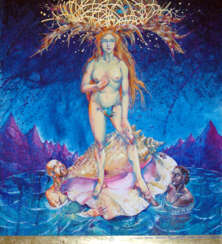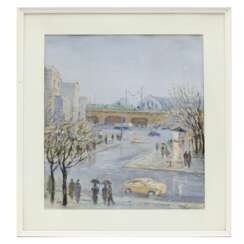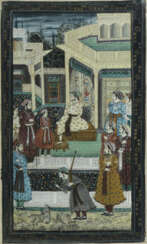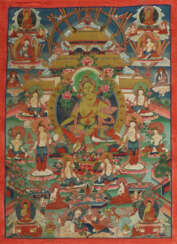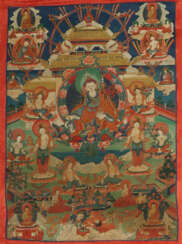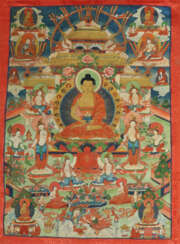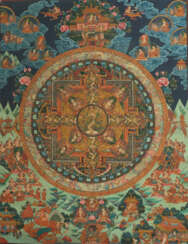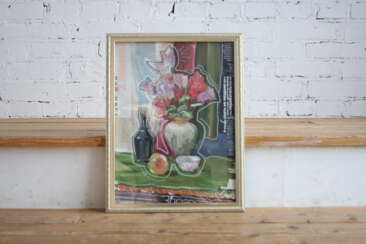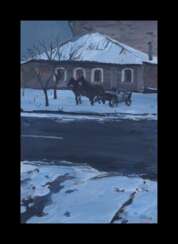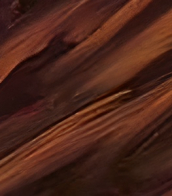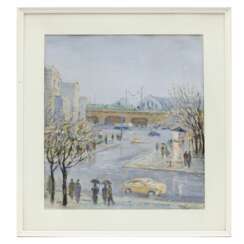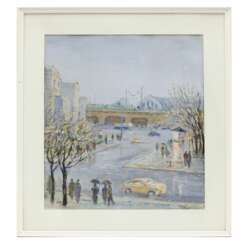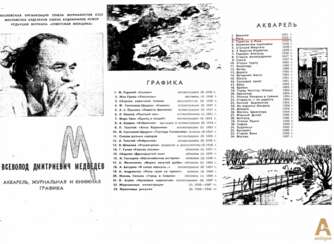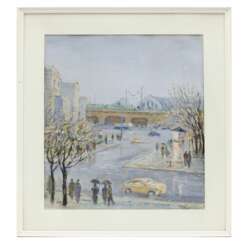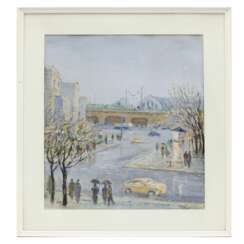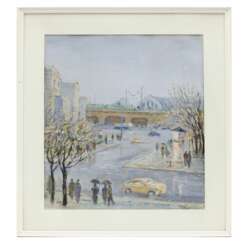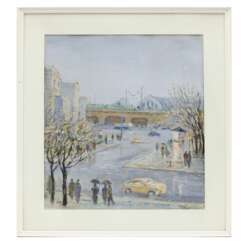658 Items by auctions and galleries:
gouache
"РОЖДЕНИЕ ЕВРОПЫ. ТОЛЕРАНТНОСТЬ." холст, гуашь, акварель, сусальное золото, 100х90, 2015 "THE BIRTH OF EUROPE. TOLERANCE" canvas, gouache, watercolor, gold leaf, 100 x 90, 2015
Petr Annenkov (b. 1953)  Shop Annenkov Petr
Shop Annenkov Petr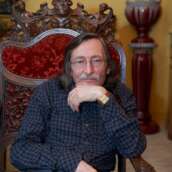

Petr Annenkov
06.03.1953
Russia
Анненков Пётр Тимофеевич
художник, график, живописец,
мультипликатор, художник книги.
член академии художеств республики Узбекистан.
Родился в 1953 году, 6 марта. Окончил Ташкетский художественно-театральный институт им. Островского, отделение книжной графики.
1982-1985 гг. - редактор отдела по художественной детской литературе и изобразительному искусству, главный художник в Министерстве Госкомпечати.
1985-1994 гг. - свободный художник
издательств детской литературы.
с 1994 г. - генеральный директор ООО “Art Press“.
Его работы хранятся в собраниях Государственного музея искусств Узбекистана, музея современного искусства в Москве, музея искусств народов Востока, нукусского музея им. И. В. Савицкого, в Музее Олимпийского движения в Лозанне
(Швейцария), в коллекции музея Ватикана, Президента Узбекистана, Президента России, Президента Фонда Аденауэра, посла Японии в Узбекистане, в Дирекции художественных выставок Министерства по делам культуры Республики Узбекистан, в коллекции Союза художников Узбекистана, в частных собраниях США, Великобритании, Германии, Японии, Турции, Швейцарии, Финляндии и других стан.
Награждён серебрянной медалью Академии художеств Республики Узбекистан (2001 г.), Орденом „Мехнат Шухрати“ (Трудовой Славы) (2002 г.),
званием Заслуженный работник культуры
Республики Узбекистан (2008 г.).

Artist shop
Annenkov Petr
Russia
Number of products: 35
Still life "HELLO!"
Angelina Liakh (b. 2000) 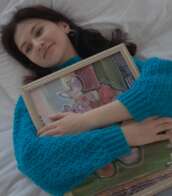 Shop Liakh Angelina
Shop Liakh Angelina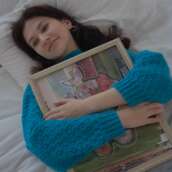

Angelina Liakh
01.12.2000
Russia
Привет! Меня зовут Ангелина Лях. Я родилась в Краснодарском крае, на юге России, поэтому мои карты наполнены теплом. Сейчас живу в Ростове-на-Дону. Я начала рисовать в детском саду. С тех пор я исследовал различные техники и материалы изобразительного искусства. Коллаж и живопись - это то, что мне нравится. С 5 лет я училась в детской художественной школе. Затем училась в гимназии №35 по архитектурно-художественному профилю. Где глубоко изучались основы изобразительного искусства. Потом поступила в университет на факультет дизайна. Также в течение 3 лет брала уроки академической живописи и рисунка у местного живописца Василия Лазебного, работая в его мастерской. С 2022г студентка института «База».
Участвовала в выставках креативного арт-пространства АртБазар, Ростов-на-Дону..

Artist shop
Liakh Angelina
Russia
Number of products: 5
"Kharkіv antiquity"
Vladislav Zdor (b. 1994)  Shop Zdor Vladislav
Shop Zdor Vladislav
Vladislav Zdor
21.11.1994
Ukraine
Владислав Здор - украинский художник (1994 г. р.). Родился в Кривом Роге, в 2012 г. поступил в Крымское художественное училище, но в 2014 г. из-за аннексии Крыма Россией был вынужден уехать в Харьков. Закончил Харьковское художественное училище, Киевскую Академию Искусств. Работает преимущественно в стиле реализма, импрессионизма, экспрессионизма в таких жанрах как пейзаж, портрет, натюрморт, ню, военно-историческая картина. Использует различные техники: маслянная живопись, пастель, гуашь, тушь, уголь и др. Владислав находится в постоянном поиске художественных решений и приемов, концептуальных смыслов и идей, которые бы способствовали максимально точной передаче его мироощущения. Участник многих групповых всеукраинских выставок. Живет и работает в Киеве.
Artist shop
Zdor Vladislav
Ukraine
Number of products: 42
